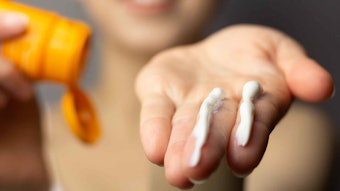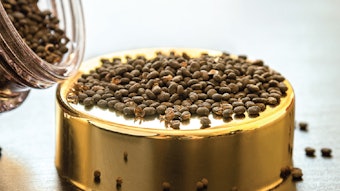Sun exposure is an everyday fact of life, whether direct or indirect. And in the midst of the current antiaging craze, consumers have gotten wise to the fact that anti-sun products are also antiaging products.
The recent hype surrounding the US Food and Drug Administration’s approval of a sun care formula incorporating Mexoryl SX (INCI: terephthalylidene dicamphor sulphonic acid) from L’Oréal is a testimonial to the higher education of consumers. A recent online report by ABC News explained that the new sunscreen is considered to be superior because of its “ability to block UVA light—a harmful, wrinkle-causing form of sunlight.”
As consumers obsess about preserving their youth, formulators are charged with the how-tos of doing just that. In this issue, authors A. Plantivaux et al. explain that UVA exposure damages proteins, lipids and DNA. As a solution, a a new (Cys-Gly)2 dimer peptide is presented as a means to protect the skin from oxidative stress.
Also in the interest of protecting skin from the sun, Elzbieta Kasprzyk et al. discuss galactoarabinan as a natural SPF booster that works by reducing emulsion particle size and facilitating the aqueous dispersion of particulate materials. Isabelle Van Reeth et al. describe the properties of silicone and its applications in sun care, including the abilities to boost SPF, add wash-off resistance and help prevent sand from sticking to the skin.
Beyond sun care, this issue of C&T magazine covers rising trends in other areas of personal care—interactive, stimulus/response materials and bold metallic pigments.
Today there is a noticeable trend toward products that depend on stimuli-responsive behavior, according to Robert Y. Lochhead. In his article, Lochhead examines stimuli-responsive polymer systems providing thermo-associative thickening at desired temperatures.
In addition, Martha Graziano and Bharat Adhia test the effects of metallic pigments on existing colorants. According to the research presented, new polychromatic colors, higher color intensity and greater coverage can be achieved by combining metallic pigments with existing colorants.
In all areas of personal care, research conducted behind the scenes by testing facilities is key to solving formulating puzzles. C&T magazine recognizes the Who’s Who in Testing labs and equipment manufacturers in this annual directory. The alphabetical listing provides full contact information for testing labs, while the geographical cross-reference helps to pinpoint testing facilities, based on location, for easy reference.
From preserving youth to expanding the limits of the color palette, this issue of C&T magazine serves as your guide to answering formulating conundrums.










